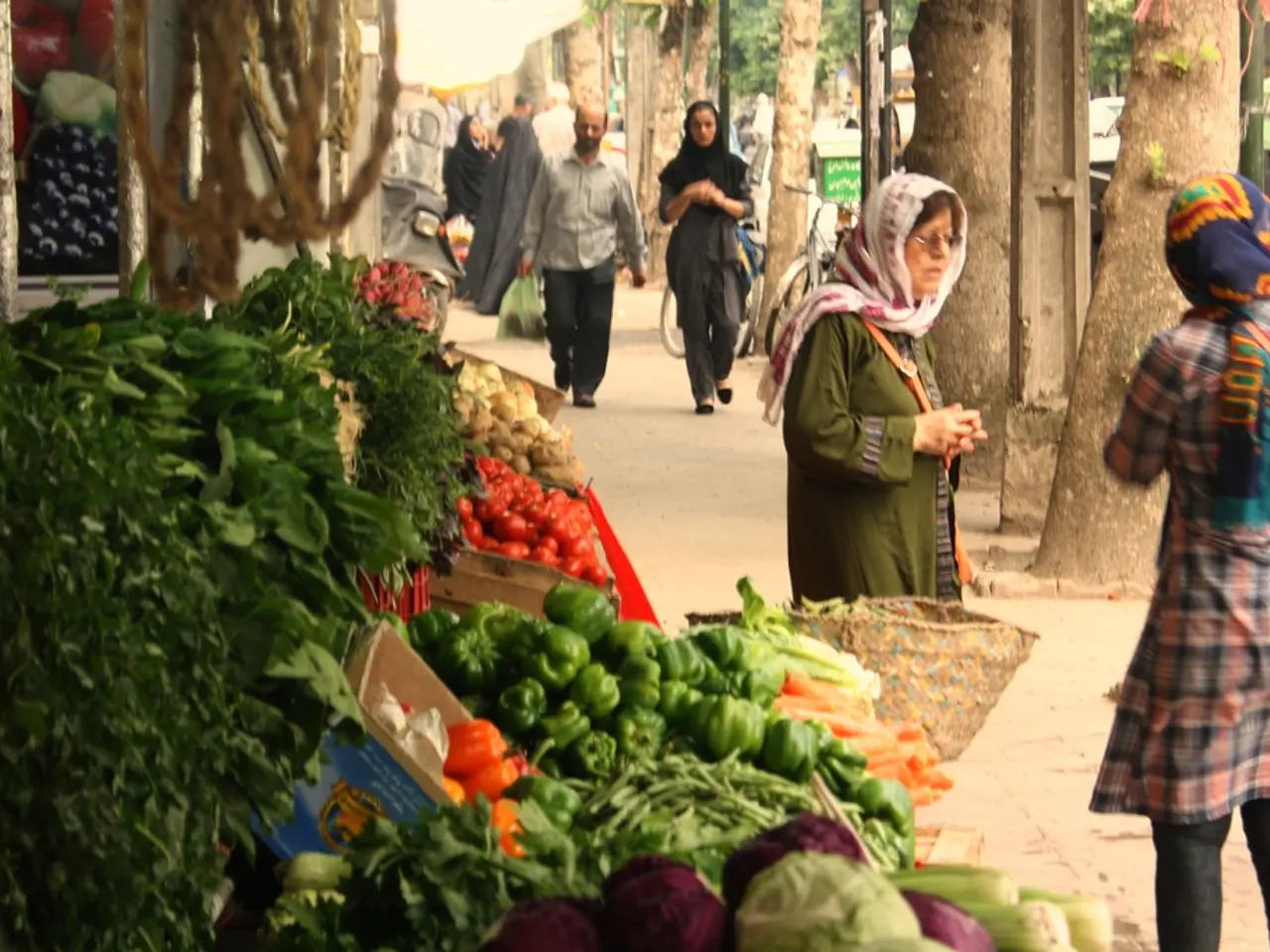India's Agricultural Exports Exhibit Resilience During Q3 FY25 Despite Global Challenges; Grains Lead the Ascent According to NITI Aayog's Trade Observations
India is taking significant steps to strengthen its presence in the global agri-trade sector, with experts calling for innovation, value addition, and strategic policy support. The Trade Watch report, recently released by the Department of Commerce and NITI Aayog, offers forward-looking recommendations to improve trade facilitation and strengthen India's participation in global markets.
In Q3 FY25, non-petroleum exports rose by 12.5%, with agricultural products playing a key role in this expansion. A notable growth was observed in cereal exports, particularly rice, which experienced a 75.2% growth following the lifting of export restrictions on select rice categories in October 2024. This surge contributed to India's agricultural exports reaching $13.1 billion in Q3 FY25, marking a 1.2% year-on-year increase.
As nations worldwide seek trusted sources of food and farm inputs, India stands poised to become a key player in the global agricultural market. To capitalise on this opportunity, the strategies for India to increase its global share in agricultural exports focus on several key areas.
1. **Value-Added Products and Crop Diversification**: Focusing on exporting high-value crops like bananas, mangoes, mango pulp, and potatoes, along with value-added processed foods, is a strategy that emphasises quality over quantity and aligns with evolving consumer preferences. Expanding beyond traditional crops like rice and wheat to include a broader range of fruits and vegetables is also crucial, responding to changing climate conditions and consumer demands.
2. **Export Clusters and Infrastructure Development**: Establishing integrated export clusters to bridge the gap between production and export capabilities is essential. Potential sites include Jalgaon and Solapur for bananas, Ratnagiri and Junagadh for mangoes, and Banaskantha for potatoes. Strengthening logistical and storage infrastructures to support these clusters is also necessary, ensuring efficient supply chain management.
3. **Targeted Market Access Strategies**: Leveraging regional trade trends and agreements to increase exports to regions like ASEAN, West Africa, and South Asia is a key strategy. Focusing on expanding market share in key global markets, such as the United States, by leveraging favourable tariff positions and improving competitiveness is also important.
4. **Innovation and Competitiveness**: Encouraging innovation in agricultural practices and value-added products to enhance quality and competitiveness is crucial. Implementing policies that support small-scale farmers and agri-entrepreneurs in adopting modern farming techniques and accessing global markets is also essential.
5. **Trade Facilitation and Policy Alignments**: Streamlining trade processes to reduce bureaucratic hurdles and improve export efficiency is necessary. Aligning trade policies with global market trends, geopolitical shifts, and technological advancements is also vital to remain competitive.
While the *Trade Watch* report primarily discusses broader trade strategies, these agricultural export strategies align with the report's broader goals of increasing India's global market share through value-added products, crop diversification, and targeted market access efforts.
India's overall merchandise exports grew by 3% in Q3 FY25 to $108.7 billion, with agriculture's contribution remaining steady. Exports to ASEAN nations, particularly Singapore, saw a sharp rise, with food and agro commodities forming a major share. The Trade Watch report was first published on July 14, 2025, and was praised by Dr. Arvind Virmani, Member of NITI Aayog, for its data-rich and analytically sharp content.
With India's global share in agricultural exports remaining below 3%, there is significant growth potential. By implementing these strategies, India is well on its way to becoming a prominent player in the global agricultural market.
- Recognizing the growth potential in the global agricultural market, India is poised to increase its share through a focus on value-added food products and crop diversification, aligning with consumer preferences and geopolitical trends.
- To capitalize on this opportunity, India is establishing integrated export clusters in key locations such as Jalgaon, Solapur, Ratnagiri, Junagadh, and Banaskantha, while also strengthening logistical and storage infrastructures to ensure efficient supply chain management.
- To boost agriculture's global presence, India is leveraging regional trade trends and agreements with ASEAN, West Africa, and South Asia, aiming to increase exports to these regions, while also expanding market share in key global markets like the United States.



